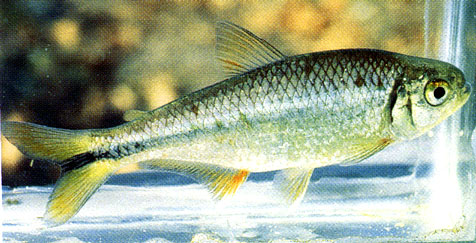Scientists Compare Structural and Functional Evolution with First Atlas of Cavefish Brains

Photo: Astyanax mexicanus (USGS)
Cavefish are fish that dwell in caves, unable to access the outside world. Often, they were separated from their closest relatives by the separation of continents or path caused by a river's formation. These 86 species have evolved independently of one another for millions of years, but their environment is very niche. This makes cavefish useful in studying convergent evolution: how species evolve the same trait because of similar environmental pressures, not from a common ancestor.
In a new study, researchers at Florida Atlantic University used neural imaging to measure brain signals and activity, then compared the neural activity to the fish's morphology and behavior. The comparison takes a more holistic account of how evolution is occurring.
The morphology and behavior of cavefish have been studied extensively over the last 80 years because they evolved some unique characteristics. All cavefish are blind, and some have even lost the development of eyes. Their sleeping and eating habitats have evolved independently of the sun for millions of years, making for some unconventional behavior.
Video: Dr. Prosanta Chakrabarty elaborates on why cavefish evolution is unique and what scientists can learn from that.
Researchers at FUA found that in four separate populations of A. mexicanus cavefish, all evolved different neural pathways for hunting behavior and sleeping patterns, both of which predate their speciation. They also found differences in the physical size of 13 common brain regions, including the cerebellum and parts of the hypothalamus.
Due to their environment, cavefish populations are highly diverse, even within the same species. With the measurements of brain regions that are common across cavefish species, researchers have created an atlas that shows intraspecies variation and will guide future studies on this species' evolution and evolution principles. By studying morphology, neural activity pathways, and brain development, researchers were able to see that cavefish brains' structure and function do not evolve on the same linear track of evolution.
The atlas is a significant new resource because it provides a foundation for future studies that compare the evolution of structure and function.
Sources: Cell Magazine, Florida Atlantic University via EurekAlert!, Keene et. al., Sparks & Chakrabartyet. al., USGS








